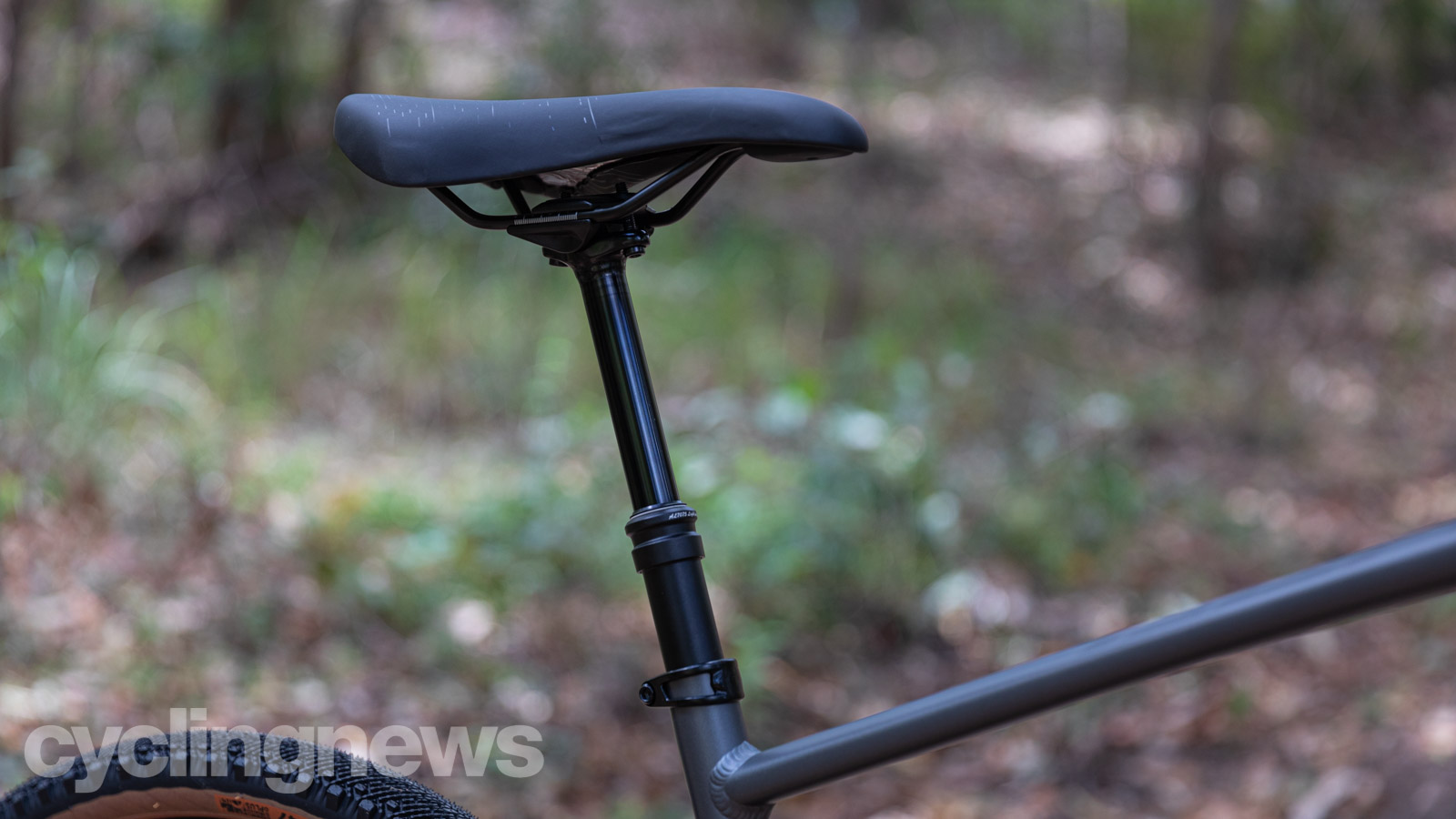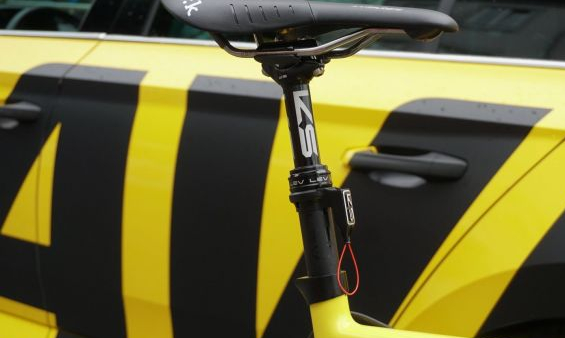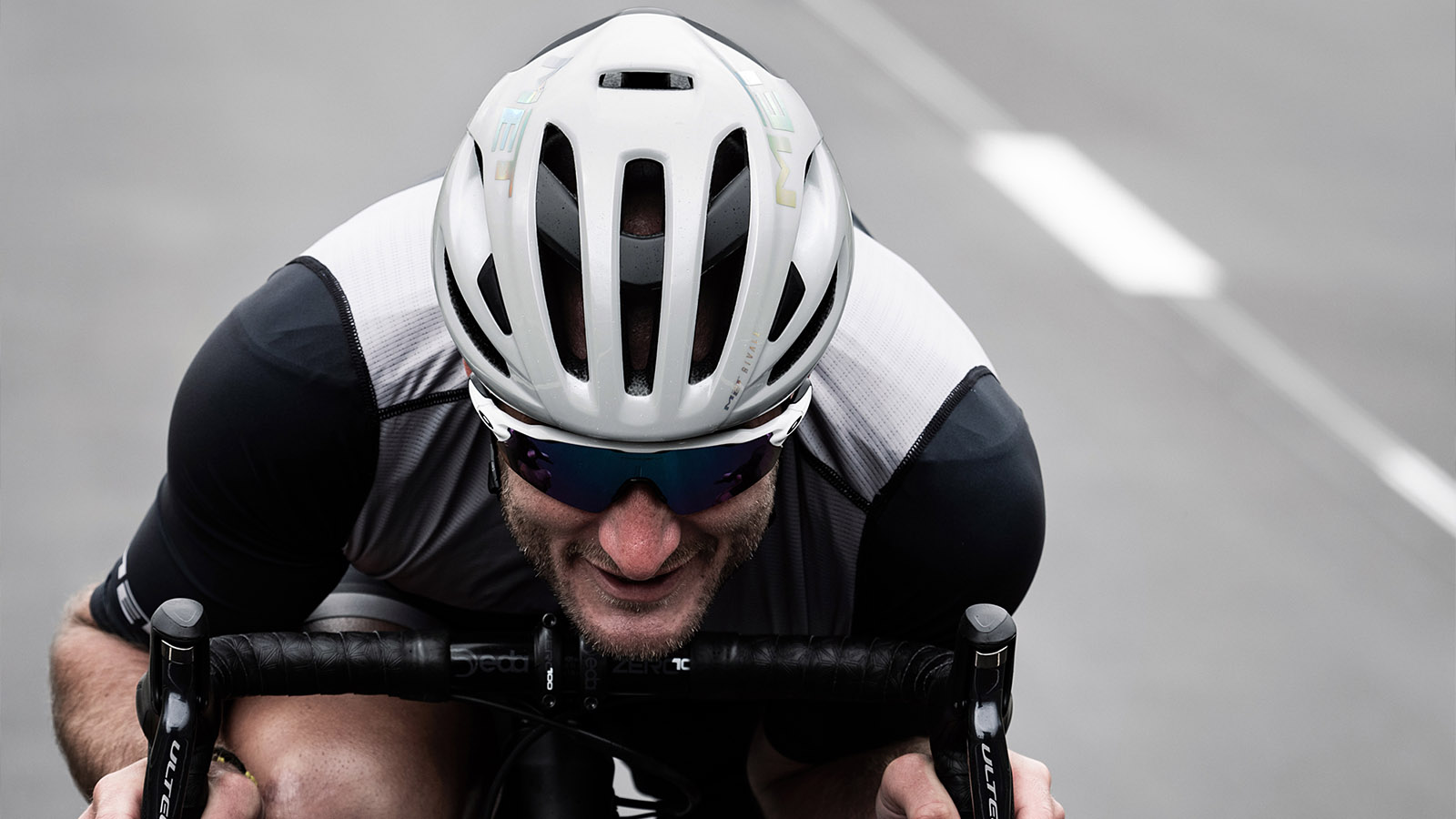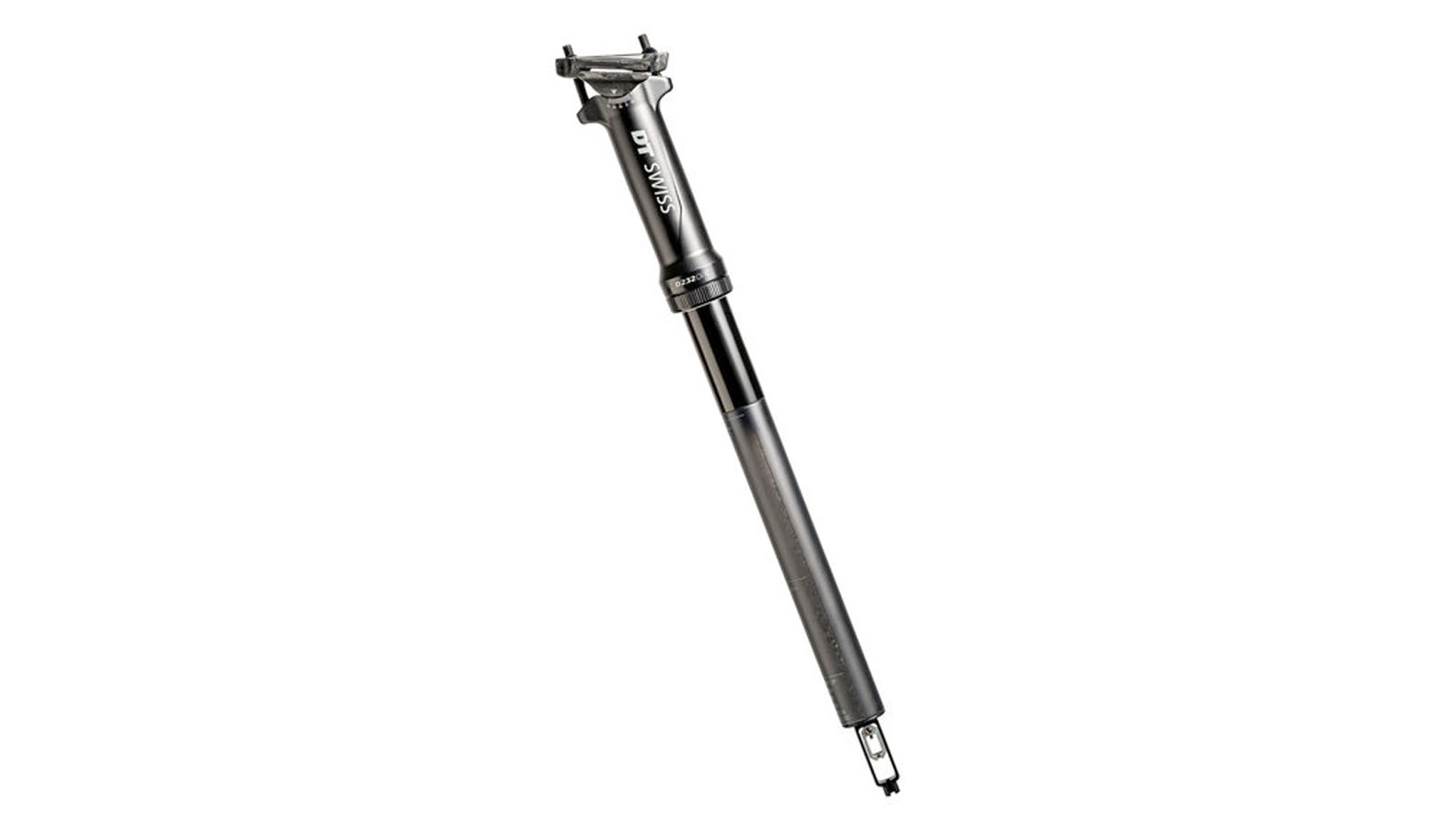Will the UCI's super tuck ban bring about the age of the road dropper post?
A UCI legal workaround that gets you most of the way to the super tuck without the 30-second time penalty

The UCI banning the super tuck caused quite a swell. Between riders annoyed that a competitive tool had been removed from their proverbial belt to pros, pundits, and fans pointing out that there are vastly more important issues the UCI should be focused on — but hey, they still measure socks too — this minor rule change has made surprisingly big waves.
The UCI has a lot of rules that don't make a lot of sense, especially around equipment and body position; however, teams and their sponsors alike are notorious for working out clever ways to expand the box the UCI puts around them into a rectangle for gains within the rules.
So with the super tuck being outlawed and this 'push up against the edge of box' mentality, it got us thinking; will this decision by the UCI usher in the age of the road dropper post?
Adjustable seatpost
For those that haven't swung a leg over a mountain bike in the last 20-years, a dropper post is a height-adjustable seatpost that is controlled by a lever mounted on your handlebars. In an off-road riding scenario, a dropper allows you to get the saddle down and out of the way, so when you drop into steep terrain, you can get your weight back without the saddle clipping your undercarriage on the way past.
Moving the saddle out of the way also creates more body-bike separation, vastly improving cornering control, and providing additional leverage so you can really push the bike into the ground to take advantage of all the available grip. Droppers have been around for some time now, and the impact they've had on the terrain an average rider can navigate is astounding — a lot of people nowadays struggle to ride an MTB with a fixed seatpost, myself included.
We have seen dropper posts on road bikes in the past; back in 2017, the Mavic Neutral Support bikes at the Tour de France were equipped with KS dropper posts offering 65mm of travel, actuated by a simplistic pull loop system. The idea here wasn't for manoeuvrability, but instead to allow the saddle height on the neutral support bikes to be adjusted on the fly to help riders get situated and comfortable quickly.

BMC came up with a rudimentary dropper for the 2017 Tour, so that Richie Porte would have a backup in case he crashed and needed a bike change.
Get The Leadout Newsletter
The latest race content, interviews, features, reviews and expert buying guides, direct to your inbox!
Ivan Basso also used an antiquated dropper post when he was racing for Liquigas, saying that he preferred a slightly lower saddle height for smoother pedalling at high-cadence and a taller one when he was griding away at low RPM.
At the time, these were one-off units because dropper posts in the 27.2mm diameter found on most road bikes (that still use a round seatpost) were essentially non-existent. Gravel changed all of that.
As a genre, the road is pretty slow on the uptake of new technology. The prime example is that we're still having a debate about the efficacy of disc brakes, not to mention the geometry of a modern-day race bike is almost a mirror image of one from the 1980s.
Meanwhile, we see gravel bikes far and wide with progressive geometries, suspension, tyre and rim tech that allows for more grip and fewer punctures, integration that makes your life easier rather than just more aero, and of course, dropper posts.
With gravel exploding and the bikes evolving at the speed of light, we've started to see these height-adjustable seatposts permeate through the ranks of drop-bar knobby-tired bikes. I'll happily admit I thought dropper posts on gravel bikes were completely unnecessary until I rode a bike that had one. I will also concede they don't have quite as pronounced an impact on the way a drop-bar bike rides, but there is still a benefit.
Beyond just being able to put both your feet down at a light sitting on the saddle, a dropper lowers your centre of gravity, providing for a noticeable improvement in seated cornering. When you pop your derriere off the saddle, you have more leverage to pin the tyres to the road and eke out every bit of the available traction. In practice, it's eye-opening how much more control even 50mm of drop affords.
But, the knock-on effect is that with your seat lower, your body is more compact. Bend your elbows with the seat down, and you're three-quarters of the way to the super tuck position, and you're still in a place to control your bike. No, it's not as aero as the fully tucked, sitting on the top tube and holding the tops, but doing so nowadays will earn you a 30-second penalty, so even if it creates less drag, it's still slower in a race.

At its most basic level getting aero on the bike is about making the area of your body that's exposed to the wind as small as possible. With a dropper post, you can effectively get your chest out of the wind without leaving the saddle or having your butt pointed towards the sky, and then extend it back up when it's time to pedal.
Maybe I'm taking an overly simple look at the situation; of course, there are caveats, but this seems like a workaround that doesn't break the UCI's rules, and still allows riders to take advantage of an aero tucked, descending position. That said, if anyone from the UCI rules committee reads this, they will probably ban droppers too — you know, in the name of rider safety.
There are hurdles, but they are low

Of course, a dropper post has quite a lot more going on than the carbon tubes currently used to hold road saddles in place, so it's no surprise they are heavier. The lightest 27.2mm dropper we are aware of is the DT Swiss' upside-down D 232 One weighing 369g, which is still almost double what a standard seatpost weighs. But, with the 6.8kg minimum bike weight rule still being enforced, World Tour mechanics have to actively add weight to bikes to make them race legal. I would argue the grams that come with a dropper post are quite a bit more functional than the fishing weights taped to the inside of the seat tube.
The other glaring issue is that dropper posts are traditionally round, and the vast majority of seat tubes on modern road bikes, especially those used in the World Tour, are not. For the general population, this is a non-starter, but with the entire engineering department of a bike or component brand behind you, it's barely even a hurdle. In fact, BMC already makes an oval-shaped dropper, the RAD (Race Application Dropper) used in its Four Stroke XC bikes, which Jordan Sarrou rode during his win at the 2020 World Championships. Really, all that needs to change is the outside edge of the lower cartridge, which for a big R&D department could probably be engineered in an afternoon.
There will no doubt be many a ruffled brow at even the suggestion of setting up a dropper post on a road bike, and there will be quite a few who will say road bikes don't need them, and neither do the pros. The pros don't need to super tuck either, but it helps them go faster, just like aero wheels, oversized derailleur pulleys, and race chains; a dropper might just provide the marginal gain on a descent that squeaks out a stage win.
Based on the Gold Coast of Australia, Colin has written tech content for cycling publication for a decade. With hundreds of buyer's guides, reviews and how-tos published in Bike Radar, Cyclingnews, Bike Perfect and Cycling Weekly, as well as in numerous publications dedicated to his other passion, skiing.
Colin was a key contributor to Cyclingnews between 2019 and 2021, during which time he helped build the site's tech coverage from the ground up. Nowadays he works full-time as the news and content editor of Flow MTB magazine.